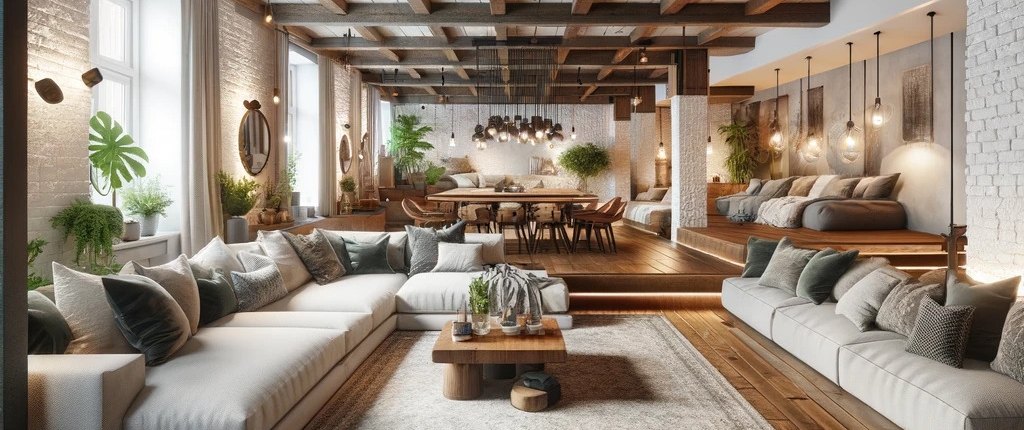Transforming Your Basement
When it comes to home improvement, the basement often gets overlooked. Yet, this often-underutilized space holds immense potential for transformation. Whether it’s an additional living area, a home office, or a recreation room, a well-thought-out basement renovation design can breathe new life into your home.
The Potential of Your Basement
Every basement holds a wealth of untapped potential. Right now, it might just be a storage area for old furniture and holiday decorations, but with the right design and renovation, your basement can become the most enjoyed space in your home.
The key to unlocking the potential of your basement lies in recognizing its versatile nature. Depending on your needs, you can transform it into a cozy family room, a functional workspace, a personal gym, or even a mini-apartment for guests or rental. With a solid renovation plan, your basement can significantly boost not only the value of your home but also the quality of your living space. For some ideas on how to utilize this space, check out our article on basement renovation ideas.
Reasons to Renovate Your Basement
There are several compelling reasons to consider a basement remodel. First and foremost, it’s an excellent way to maximize your home’s square footage. If you feel like you’re outgrowing your current living space but moving isn’t an option, renovating your basement can provide the additional space you need.
Secondly, renovating your basement can significantly increase the value of your home. Potential buyers often see a finished basement as a major bonus since it offers additional living space or potential rental income.
Lastly, it’s a great way to personalize your home. Whether you want a home theater, a personal gym, or a quiet home office, your basement can be transformed to reflect your lifestyle and interests.
However, it’s important to note that basement renovations require thoughtful planning and execution. You’ll need to consider factors like insulation, ventilation, and moisture control. Check out our article on basement renovation steps to ensure that your renovation project is a success.
In conclusion, a basement renovation is a great investment that can significantly enhance your home’s functionality and value. So why wait? Start exploring the possibilities today, and transform your basement into your new favorite space.
Planning Your Basement Renovation
Successful basement renovation design starts with careful planning. This stage requires you to make crucial decisions about the purpose of your space, your budget, and your timeline. Here’s how to get started:
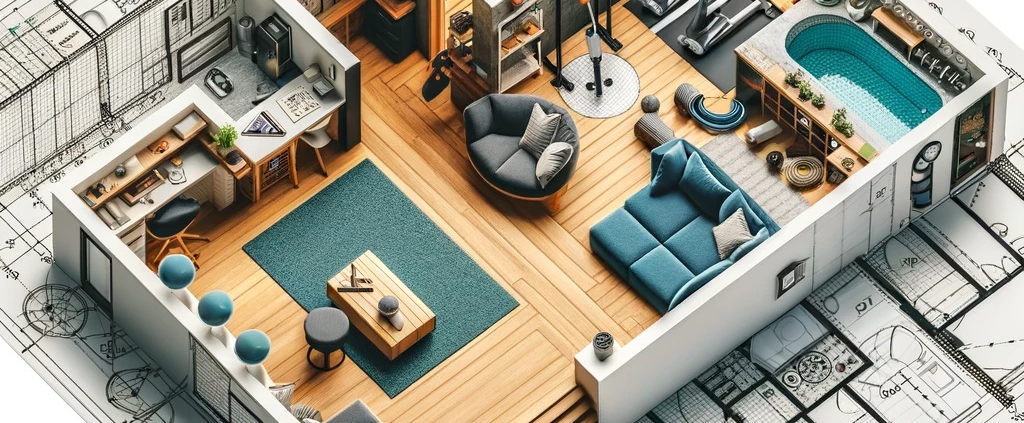
Defining the Purpose of Your Space
The first step in planning your basement renovation is to define the purpose of your space. Are you looking to create an additional living area, a home office, or a recreational room? Your decision will guide your design choices and help you plan a functional and visually appealing space. For different ideas on how you can transform your basement, check out our article on basement renovation ideas.
Setting a Budget for Your Renovation
Before you start your renovation, it’s essential to set a budget. This will help you determine the extent of the changes you can make and guide your choices for materials and finishes. Remember, your budget should include costs for materials, labor, and any unexpected expenses that may arise. To get an idea of what a basement renovation might cost, you can refer to our article on basement renovation cost.
| Renovation Aspects | Cost Range (per sq. ft) |
|---|---|
| Basic Renovation | $10 – $35 |
| Mid-range Renovation | $30 – $75 |
| High-end Renovation | $70 – $200+ |
Creating a Timeline for Your Project
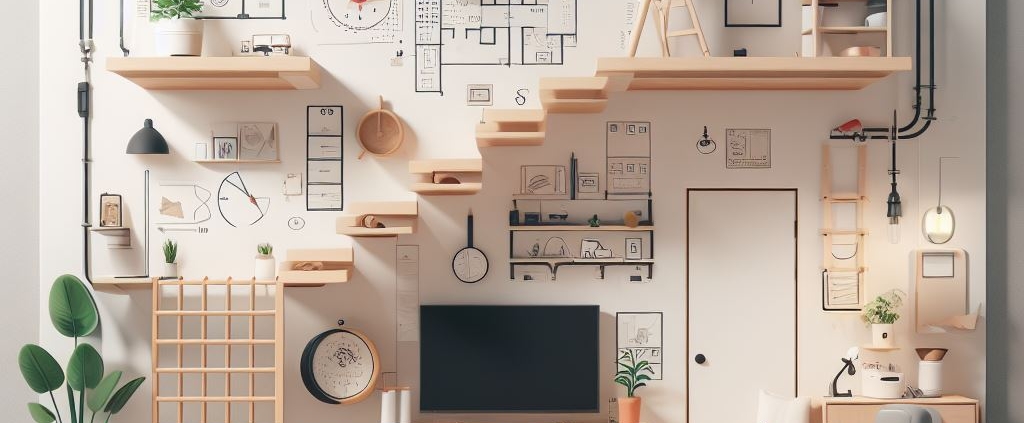
Creating a timeline for your project is another crucial step. This will help you manage the renovation process and set realistic expectations for when the work will be completed. Keep in mind that basement renovations can be complex and often take longer than expected due to unforeseen issues such as plumbing or electrical work. It’s always best to allow for some flexibility in your timeline to accommodate these potential setbacks. For more information on what to expect during a basement renovation, check out our basement renovation steps article.
| Renovation Stage | Estimated Time |
|---|---|
| Planning & Design | 2 – 4 weeks |
| Permitting | 1 – 3 weeks |
| Construction | 3 – 8 weeks |
| Finishing Touches | 1 – 2 weeks |
Taking the time to plan your basement renovation thoroughly will help ensure a smoother process and a more satisfying result. Remember, the goal is to create a space that meets your needs and enhances your home. Happy renovating!
Basement Renovation Design Ideas
As you embark on your basement renovation journey, establishing a clear vision of what you want to achieve is essential. The beauty of a basement renovation design lies in its flexibility; you can transform your basement into almost anything. Here are some ideas to inspire you.
Creating a Functional Living Space
Converting your basement into a functional living space can add valuable square footage to your home. Think about what kind of space your home lacks. Maybe you need an extra bedroom for guests, a playroom for the kids, or perhaps a cozy family room where everyone can unwind and relax.
For a functional living space, prioritize comfort. Opt for warm lighting, plush furniture, and cozy textiles. Also, consider your storage needs. Incorporate built-in shelves or cabinets to keep the room tidy and organized. To further explore this idea, check our article about basement remodeling for more insights.
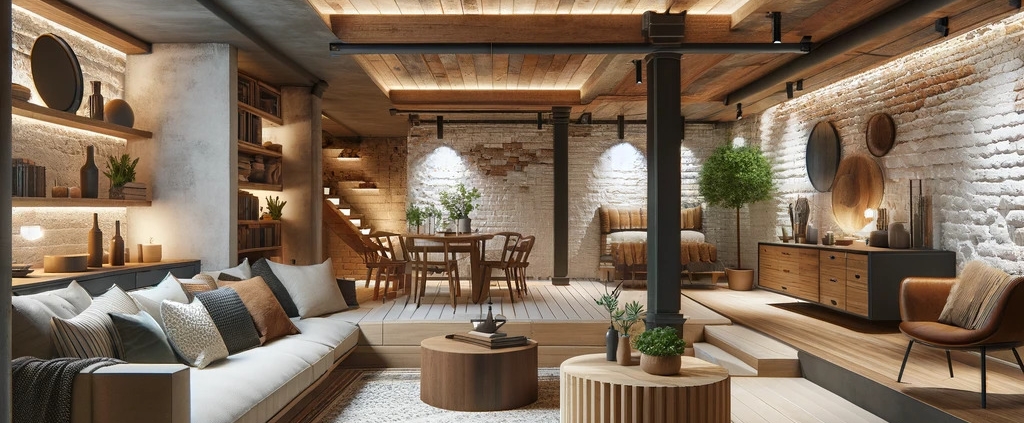
Designing a Recreational or Entertainment Room
If you’re someone who loves to host friends or have family game nights, transforming your basement into a recreational or entertainment room could be the perfect fit. This could include a home theater, a game room with a pool table, or even a mini-bar area.
When designing an entertainment room, focus on creating a social atmosphere. Arrange your seating strategically for conversation and include fun elements like a popcorn machine for movie nights or a dart board for friendly competitions. Learn more about this topic in our article about basement renovation ideas.
Setting Up a Home Office or Workspace
With more people working from home than ever before, setting up a home office in your basement can provide you with a quiet and dedicated workspace. This can also apply if you need a craft room, a study area, or a place for your home business.
In this case, your design should promote productivity. Ensure your workspace has plenty of light to reduce eye strain, and invest in ergonomic furniture to maintain good posture throughout the day. Also, consider adding a small lounge area for breaks to keep your workspace versatile. For a step-by-step guide on how to set up this kind of space, check our article about basement renovation steps.
Remember, these are just a few of the countless possibilities for your basement renovation. Your basement can become whatever you need it to be, so let your needs and creativity guide your design. And, of course, don’t forget to have fun in the process!
Key Design Elements to Consider
When it comes to basement renovation design, there are several key elements you should consider to transform your basement into a beautiful and functional space. Among these, the three most crucial aspects are maximizing natural light, choosing the right flooring, and selecting the perfect paint colors. Let’s delve into each one of them.
Maximizing Natural Light
Basements are often seen as dark and uninviting spaces due to the lack of natural light. However, with careful planning and design, you can maximize the amount of natural light in your basement, making it feel more open and welcoming.
One way to increase natural light is by installing larger windows or creating window wells. If that’s not feasible, consider using mirrors or reflective surfaces to bounce light around the room. Light-colored paint and furnishings can also help brighten up the space.
Remember that adequate lighting is not just about aesthetics; it also plays a vital role in creating a comfortable and productive environment. For more tips on how to bring more light into your basement, check out our article on basement remodeling.
Choosing the Right Flooring
Flooring is another crucial design element in your basement renovation. The right flooring can set the tone for your space and make it more comfortable and inviting.
When deciding on flooring, consider the purpose of the room, the amount of traffic it will receive, and the potential for moisture or dampness. Materials like vinyl, tile, and engineered wood are popular choices for basements due to their durability and moisture resistance.
Before installing new flooring, make sure the subfloor is properly sealed and insulated to prevent moisture problems. For more information on how to choose the right flooring for your basement, read our guide on basement finishing.
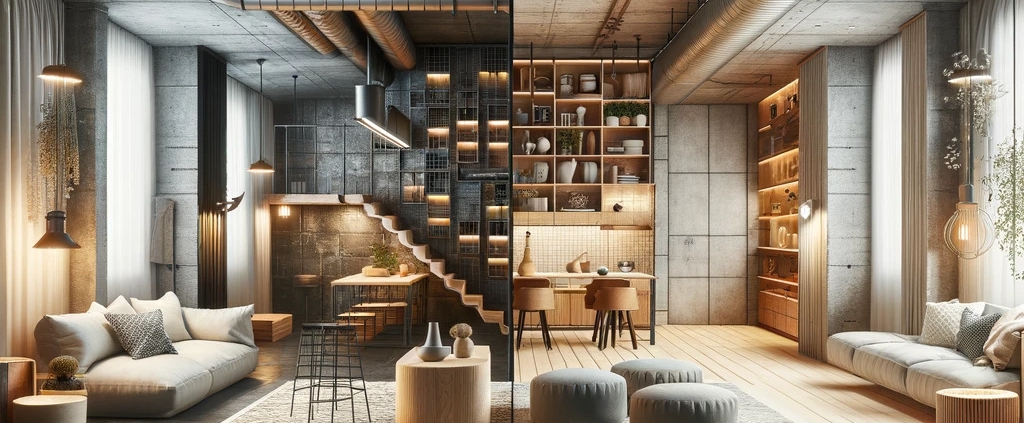
Selecting the Perfect Paint Colors
The colors you choose for your basement can greatly influence how the space feels. Light colors can help make a small space look larger and brighter, while darker hues can create a cozy and intimate atmosphere.
When selecting paint colors, consider the amount of natural light in the room, the size of the space, and the mood you want to create. For instance, neutral shades like beige, gray, or white can help to brighten a dark basement, while bold colors like navy blue or emerald green can add a touch of drama and sophistication.
Remember, your basement is an extension of your home, so choose colors that complement the rest of your home’s décor. For more inspiration on choosing the perfect paint colors for your basement, visit our collection of basement renovation ideas.
By considering these key design elements, you can create a basement renovation design that not only meets your needs but also enhances the overall aesthetic of your home. Happy renovating!
Tips for a Successful Basement Renovation
Concluding your basement renovation design project doesn’t have to be a daunting task. With a few key considerations in mind, you can navigate through the process smoothly. Here are some tips that will help you deal with basement-specific challenges, incorporate storage solutions, and ensure proper insulation and ventilation.
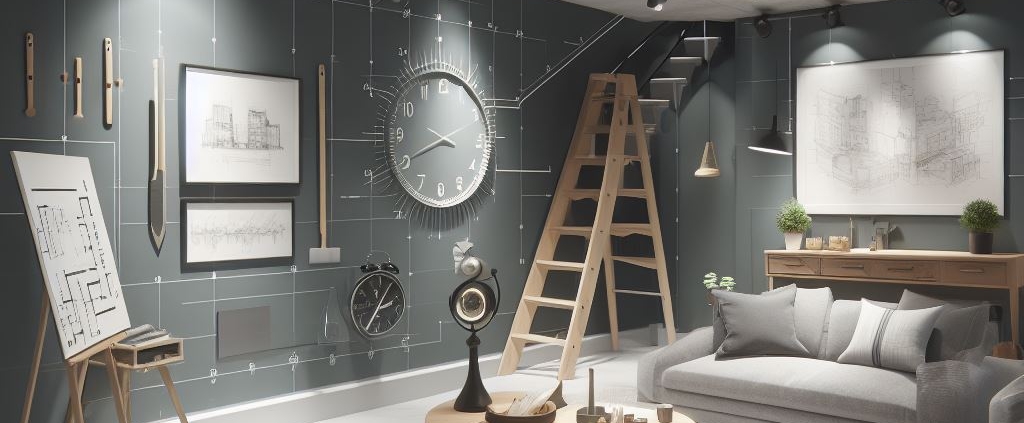
Dealing with Basement Specific Challenges
Basements come with their unique set of challenges. Being below ground level, they are prone to dampness and flooding. Before you start any renovation, make sure to thoroughly check for any signs of water damage or leaks. If you find any, it’s crucial to address these issues first to avoid future complications.
In addition, consider the ceiling height. Basements often have lower ceilings, which might limit your design options. Planning your layout carefully can help you make the most of the available space. For more detailed guidance, refer to our article on basement renovation steps.
Incorporating Storage Solutions
One of the great advantages of a basement is that it offers ample space for storage. When planning your basement renovation design, consider incorporating built-in storage units or closets. They not only help to keep your space organized but also contribute to the overall aesthetics of your basement.
You can also opt for multi-purpose furniture with built-in storage to maximize the utility of your space. Such creative storage solutions can make your basement functional without compromising on its design. For more storage ideas and renovation inspiration, check out our collection of basement renovation ideas.
Ensuring Proper Insulation and Ventilation
Insulation and ventilation are key factors in any basement renovation project. Proper insulation can help maintain a comfortable temperature in your basement and reduce energy costs. Additionally, it can prevent moisture buildup, which is a common issue in basements.
When it comes to ventilation, make sure your basement has enough air circulation. This will help prevent any dampness and keep your basement fresh and dry. If your basement lacks windows, consider installing an exhaust fan or a dehumidifier.
It’s also important to note that different regions may have specific building codes regarding basement insulation and ventilation. Make sure to check with your local building department to ensure your renovation meets these requirements.
Successfully renovating your basement requires careful planning and thoughtful design. By addressing basement-specific challenges, incorporating effective storage solutions, and ensuring proper insulation and ventilation, you can transform your basement into a comfortable and functional space. For more tips and guidance on basement remodeling, check out our article on basement remodeling.

